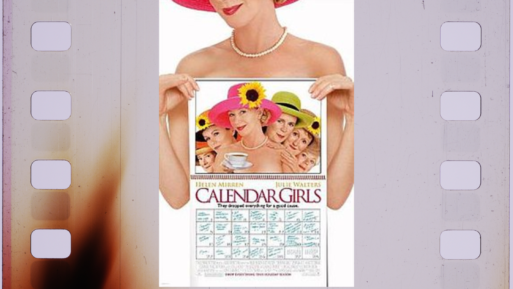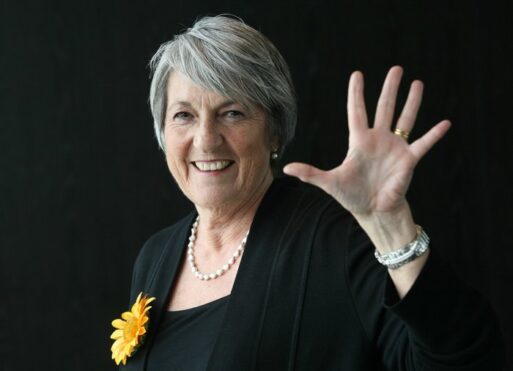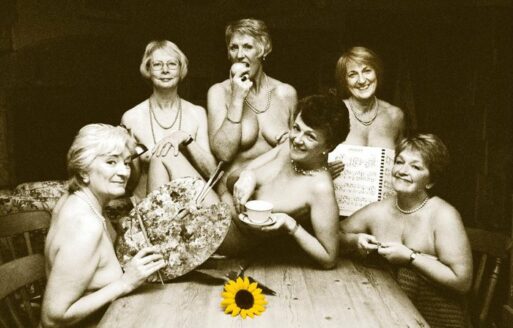
Ever since I accidentally stumbled across Calendar Girls, the 2003 British comedy starring Helen Mirren and Julie Walters, it’s been a staple in my comfort-viewing catalog. The movie manages to deftly portray how death and grief can rock a small town and the people living in it without bogging you down in despair. In fact, the movie – which tells the true story of a group of women from Yorkshire – is so fueled by charm that you can’t help but be cheered by it. This year marks the 25th anniversary of the real-life Calendar Girls’s fundraising phenomenon, so the heart-warming film is well worth a re-visit.
The Inspiration
In 1998, 54-year old John Richard Baker died from non-Hodgkin’s lymphoma, a form of blood cancer, only a few months after his initial diagnosis. John’s wife Angela wanted to focus on something that would help to pull her out of her grief, so she began fundraising with the help of her close friends from the local Women’s Institute.
If you’re unfamiliar, the Women’s Institute is a community-based organization for women in the United Kingdom with a focus on philanthropic endeavors. Typically, the group meets monthly to hear a speaker or demonstration or to participate in a crafting-related activity. As such, the WI is often associated with fundraising, food, baking, and other domestic crafting pastimes.
The initial goal was to purchase a more comfortable sofa for the visitors’ lounge in the hospital where John was treated.

Angela Baker, the inspiration behind the movie
Credit: BloodCancer.org
Angela recalled a memorable night before his death, when her close friend Tricia Stewart and some other “WI girls” entertained John with the idea of publishing a nude calendar. Tricia’s idea was to make it a playful twist on traditional WI calendars, which typically feature idyllic landscapes and pastoral images. John, who enjoyed proposing ideas for which woman should grace which month, said, “It’s a fantastic idea but you’re all talk, you’ll never do it.”
Shortly after John’s death, Angela recalls that Tricia appeared at her door with a clipboard, saying, “Are we doing this calendar or not? Even if we don’t sell any, at least we’ll have tried to do something.”
So Angela, Tricia, and a few other ladies from the WI posed nude (behind artfully arranged props that covered up most of the titillating bits) for Terry Logan, a former professional photographer who was married to one of the models. After getting approval from the WI headquarters for the calendar, they wanted to print 1,000 copies and sell them for £5 each to earn £5,000 – enough for a decent couch – and distribute them from the local pub.
Instead, the calendar (as you might have already guessed) was a runaway success. Instead of selling their expected 1,000 copies, the women sold 202,000 copies that year, and were able to do a lot more than just buy a new couch. To date, the Calendar Girls have raised over £5 million for Leukaemia & Lymphoma Research (now called Blood Cancer UK), the UK’s leading blood cancer charity.

One of the photos taken of the original Calendar Girls.
Credit: BloodCancer.org
The Movie
Calendar Girls is, overall, characterized by its depiction of female friendship with wonderfully wry British humor. In one opening scene, the WI women are practicing Tai Chi upon a lovely, verdant Yorkshire hilltop, performing the moves in unison with serene expressions on their faces. But after a minute or so, “Annie” (Julie Walters) exasperatedly throws her hands down and says, “Anyone fancy some chips?” to which all the other women excitedly agree and walk off, talking amongst themselves.
The film also devotes a lot of energy developing the back-stories of each individual “calendar girl.” Doing so grants us a better understanding of their friendships and motivations for joining (or not joining) the calendar effort. It’s hard not to root for Chris (Helen Mirren), for example, as she rails against the stodgy expectations for middle-aged English women. Examining each woman as an individual also allowed the filmmakers to highlight a dozen relatable examples of the idea that you never know what battles people are fighting behind closed doors.
While you won’t find me complaining (I’ll watch just about anything with Mirren, Walters, and Penelope Wilton in it), I wish the filmmakers had devoted more time to the scenes that dealt with heavier matters, as the ones they included were done so well. Unfortunately, so much effort was spent crafting the humor of the film, that the poignant scenes get buried in the mix.

Kettlewell, England: The village that stood in for the fictional town of Knapely
Credit: Steve Partridge
One scene in particular comes to mind, which depicts John and Annie (the characters based on John and Angela Baker) sitting in their car, admiring their town of Knapely from an overlook. In it, the filmmakers captured a beautiful moment between spouses, each expressing how much they love each other without words, while grappling with the idea that one of them would soon be gone. It’s a masterfully done, universally relatable moment, resulting in a scene that indelibly etches itself upon your heartstrings. In it, John reveals the speech he was going to give to the WI about his job as a florist, and it becomes the eulogy at his funeral:
“The flowers of Yorkshire are like the women of Yorkshire; every stage of their growth has its own beauty, but the last phase is always the most glorious…
…Then very quickly, they all go to seed.
Which makes it ironic my favorite flower isn’t even indigenous to the British Isles, let alone Yorkshire. I don’t think there’s anything on this planet that more trumpets life than the sunflower. For me, that’s because of the reason behind its name. Not because it looks like the sun, but because it follows the sun. During the course of the day, the head tracks the journey of the sun across the sky. A satellite dish for sunshine. Wherever light is, no matter how weak, these flowers will find it. And that’s such an admirable thing. And such a lesson in life.”
Ultimately, while the film is undoubtedly a comedy, it deserves an honorable mention for addressing aging, grief and death through rose-colored lenses.

 “Calendar Girls,” Directed by Nigel Cole
“Calendar Girls,” Directed by Nigel Cole


 How Dare You Die Now!
How Dare You Die Now!
 Debating Medical Aid in Dying
Debating Medical Aid in Dying
 “Help Me, Helen”
“Help Me, Helen”














